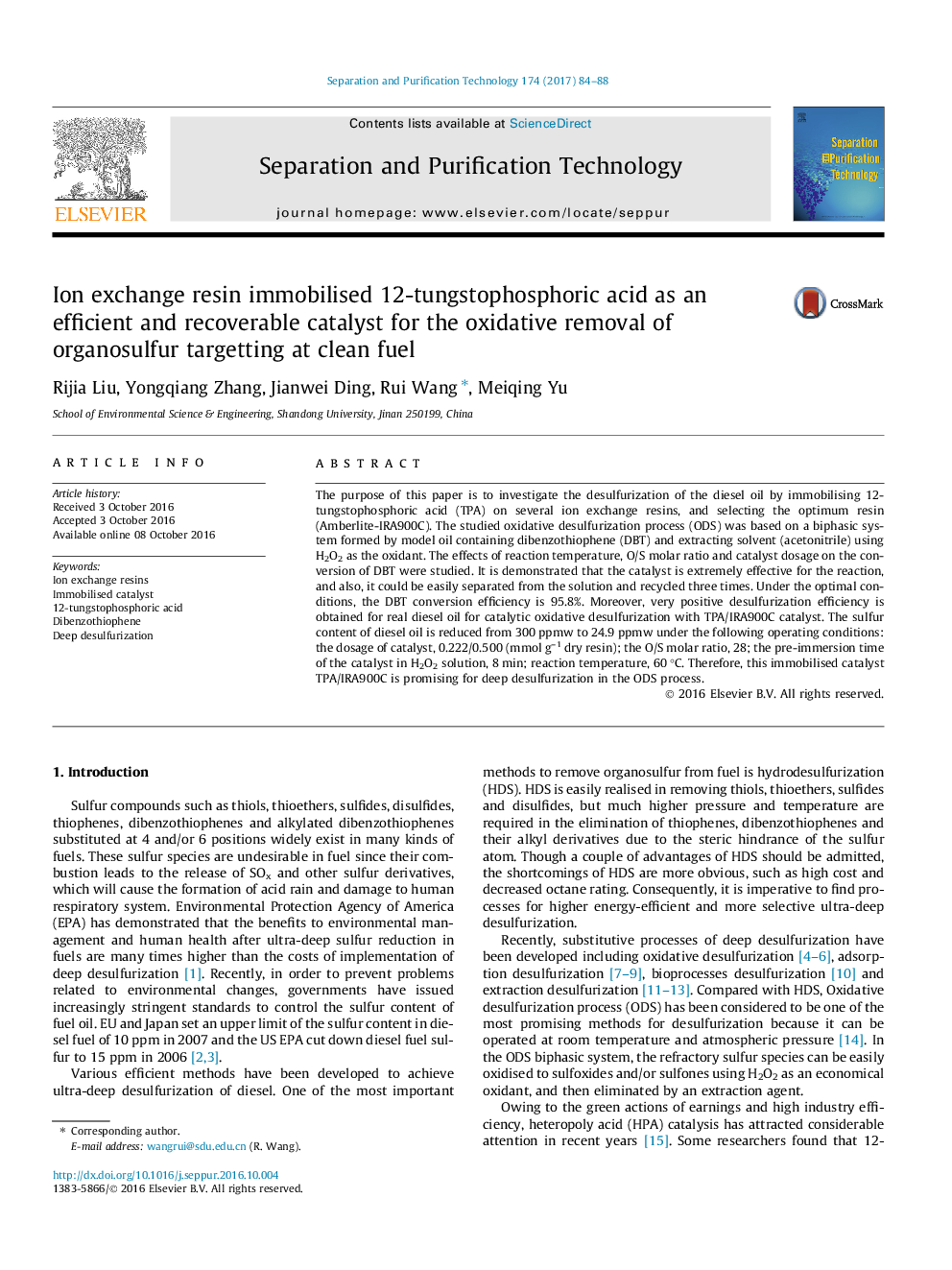| Article ID | Journal | Published Year | Pages | File Type |
|---|---|---|---|---|
| 4990166 | Separation and Purification Technology | 2017 | 5 Pages |
â¢A recoverable ion-exchange resin immobilized heteropoly acid catalyst was developed.â¢TPA/IRA900C is very active in catalyzing the oxidation of sulfur species in fuel oil.â¢The TPA/IRA900C based desulfurization process is promising in clean fuel production.
The purpose of this paper is to investigate the desulfurization of the diesel oil by immobilising 12-tungstophosphoric acid (TPA) on several ion exchange resins, and selecting the optimum resin (Amberlite-IRA900C). The studied oxidative desulfurization process (ODS) was based on a biphasic system formed by model oil containing dibenzothiophene (DBT) and extracting solvent (acetonitrile) using H2O2 as the oxidant. The effects of reaction temperature, O/S molar ratio and catalyst dosage on the conversion of DBT were studied. It is demonstrated that the catalyst is extremely effective for the reaction, and also, it could be easily separated from the solution and recycled three times. Under the optimal conditions, the DBT conversion efficiency is 95.8%. Moreover, very positive desulfurization efficiency is obtained for real diesel oil for catalytic oxidative desulfurization with TPA/IRA900C catalyst. The sulfur content of diesel oil is reduced from 300 ppmw to 24.9 ppmw under the following operating conditions: the dosage of catalyst, 0.222/0.500 (mmol g-1 dry resin); the O/S molar ratio, 28; the pre-immersion time of the catalyst in H2O2 solution, 8 min; reaction temperature, 60 °C. Therefore, this immobilised catalyst TPA/IRA900C is promising for deep desulfurization in the ODS process.
Graphical abstractTo obtain ultra-clean fuel oil, a novel reclaimable catalyst, i.e. tungstophosphoric acid (TPA) anion immobilised on ion-exchange resin, was developed with pronounced performance of up to 96% efficiency in oxidative desulfurization (ODS) of simulated diesel, using H2O2 as oxidant, and acetonitrile as extractant. Amberlite-IRA900C was screened to be the optimum resin, which makes TPA/IRA900C catalyst most active during ODS of simulated and real fuel oils in a biphasic system. Meanwhile, after reaction, TPA/IRA900C can be readily reclaimed and reused with almost the same activity as the fresh. Hence, the new process, based on the foregoing catalyst, is promising in deep desulfurization of fuel oil.Download full-size image
